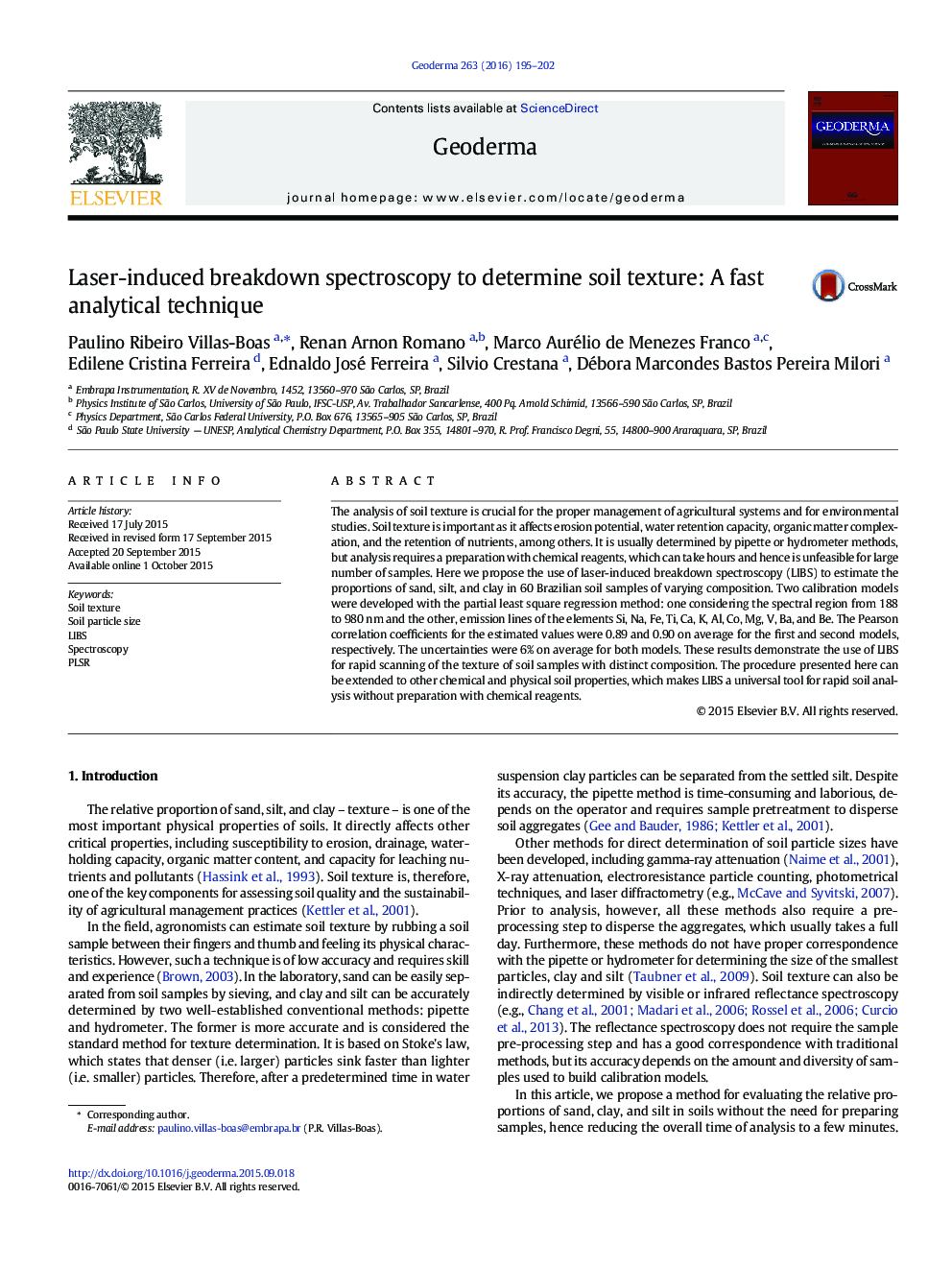| Article ID | Journal | Published Year | Pages | File Type |
|---|---|---|---|---|
| 6408476 | Geoderma | 2016 | 8 Pages |
â¢Soil texture was determined from its elemental composition with LIBS.â¢Correlation between LIBS and the pipette method was > 0.85.â¢LIBS uncertainties were below 8% for sand, silt, or clay.â¢LIBS analysis takes less than one minute per sample.â¢LIBS can be used to quickly build soil texture maps.
The analysis of soil texture is crucial for the proper management of agricultural systems and for environmental studies. Soil texture is important as it affects erosion potential, water retention capacity, organic matter complexation, and the retention of nutrients, among others. It is usually determined by pipette or hydrometer methods, but analysis requires a preparation with chemical reagents, which can take hours and hence is unfeasible for large number of samples. Here we propose the use of laser-induced breakdown spectroscopy (LIBS) to estimate the proportions of sand, silt, and clay in 60 Brazilian soil samples of varying composition. Two calibration models were developed with the partial least square regression method: one considering the spectral region from 188 to 980Â nm and the other, emission lines of the elements Si, Na, Fe, Ti, Ca, K, Al, Co, Mg, V, Ba, and Be. The Pearson correlation coefficients for the estimated values were 0.89 and 0.90 on average for the first and second models, respectively. The uncertainties were 6% on average for both models. These results demonstrate the use of LIBS for rapid scanning of the texture of soil samples with distinct composition. The procedure presented here can be extended to other chemical and physical soil properties, which makes LIBS a universal tool for rapid soil analysis without preparation with chemical reagents.
Graphical abstractDownload full-size image
